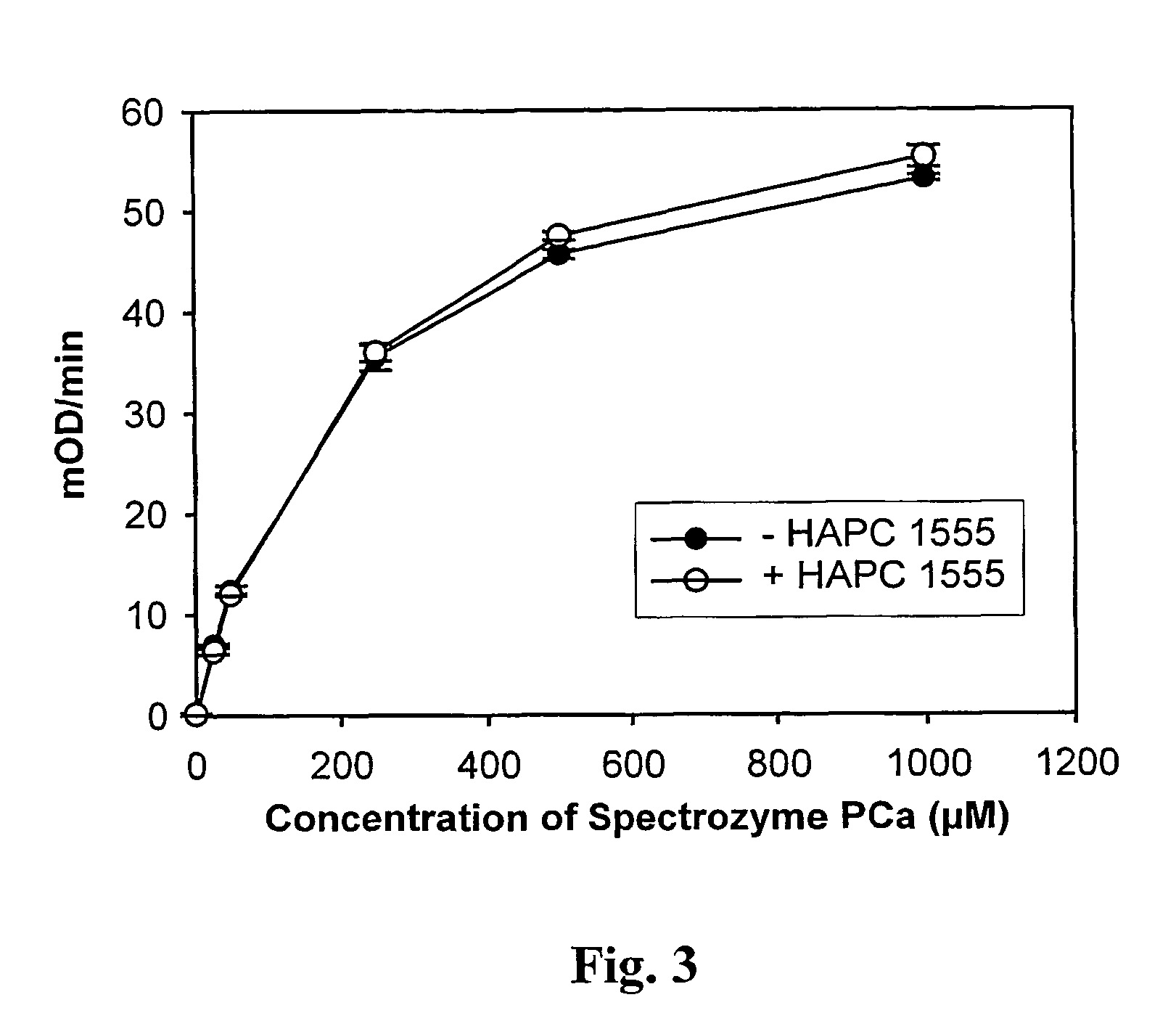Assay for rapid detection of human activated protein C and highly specific monoclonal antibody therefor
a technology of activated protein and enzyme capture assay, which is applied in the field of measurement of activated protein c (apc), can solve the problems of inconvenient use of microtiter plates, inability to directly determine the function of apc, etc., and achieves high specificity for binding and high selectivity over protein c.
- Summary
- Abstract
- Description
- Claims
- Application Information
AI Technical Summary
Benefits of technology
Problems solved by technology
Method used
Image
Examples
example 1
Quantification of APC in Human Plasma Using HAPC 1555
[0032]A. Methods
[0033]Initially, 96-well vinyl microtiter plates (Costar, Cat # 2596) were coated with 100 μl of HAPC 1555 (5 μg / ml) in coating buffer (20 mM Hepes, pH 7.5, 150 mM NaCl, 5 mM CaCl2) for 2 hours at 37° C. As negative controls, microtiter plate wells were coated with either 5 μg / ml HPC4 monoclonal antibody or 1% bovine serum albumin (BSA) in the same buffer. The plates were then blocked for 1 hour at 37° C. or overnight at 4° C. with 200 μl of blocking buffer (coating buffer containing 1% BSA). The solutions were gently removed from the plates by vacuum.
[0034]To generate a standard curve for the quantitative measurement of APC in plasma, increasing amounts of APC (from 0 to 250 ng / ml) were spiked into normal pooled plasma containing 20 mM Hepes, pH 7.5, 2 units / ml heparin, 20 mM benzamidine, and 10 mM CaCl2. The spiked plasma (100 μl) were transferred to the plates and incubated at room temperature for 1 hour. The we...
example 2
Quantification of APC in Human Plasma Specimens
[0038]The procedure of Example 1 can be used to test human plasma for APC. In Example 1, human plasma was spiked with APC, but to assess a clinical specimen for its APC content, a specimen is collected from the patient in standard citrate anticoagulant that also contains 20 mM benzamidine HCl. The blood cells are removed by centrifugation using standard techniques. The plasma is used in the assay after standard preparation (e.g., 20 mM Hepes, pH 7.5, 2 units / ml heparin and 10 mM CaCl2). The plasma sample is then analyzed for APC using an assay such as described in Example 1.
Indications Relating to Deposited Microorganism or Other Biological Material
[0039]A mouse hybridoma cell line useful in the assay of the present invention has been established and given the designation HAPC 1555. The HAPC 1555 cell line was deposited under the provisions of the Budapest Treaty with the American Type Culture Collection (ATCC), 10801 University Bouleva...
PUM
| Property | Measurement | Unit |
|---|---|---|
| Molar density | aaaaa | aaaaa |
| Molar density | aaaaa | aaaaa |
| Concentration | aaaaa | aaaaa |
Abstract
Description
Claims
Application Information
 Login to View More
Login to View More - R&D
- Intellectual Property
- Life Sciences
- Materials
- Tech Scout
- Unparalleled Data Quality
- Higher Quality Content
- 60% Fewer Hallucinations
Browse by: Latest US Patents, China's latest patents, Technical Efficacy Thesaurus, Application Domain, Technology Topic, Popular Technical Reports.
© 2025 PatSnap. All rights reserved.Legal|Privacy policy|Modern Slavery Act Transparency Statement|Sitemap|About US| Contact US: help@patsnap.com



